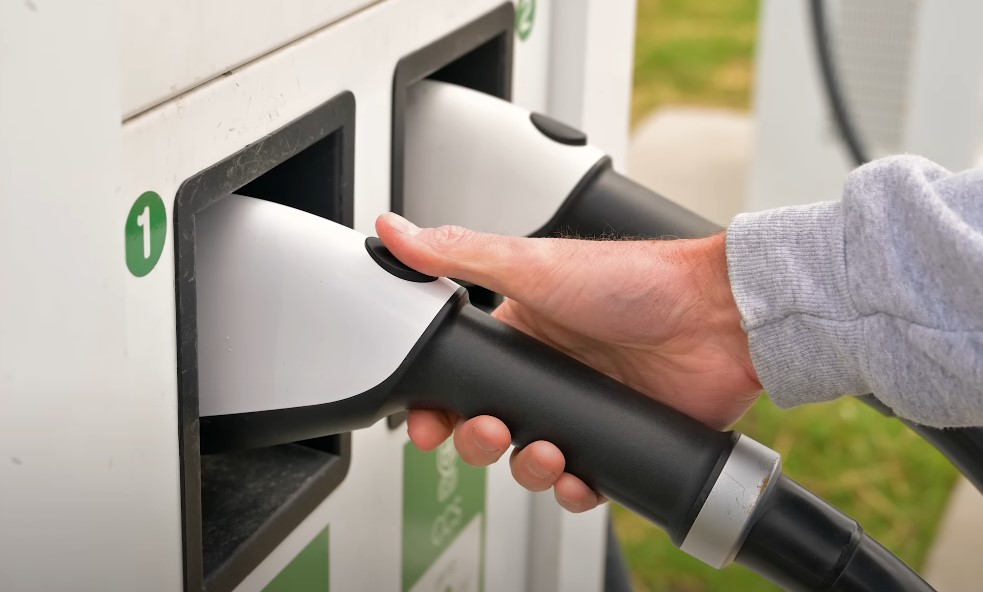
Share Post:
Making the switch to an electric vehicle (EV) is a big step towards a more sustainable future. But once you’ve made that decision, you’re faced with another important choice: which charger to use at home.
If you’re debating between a Level 1 and a Level 2 charger, let me give you a few compelling reasons why a Level 2 charger might be the better option.
Table of Contents
ToggleKey Highlights
- Faster Charging: Level 2 chargers can charge an EV 8 times faster than Level 1 chargers, providing 32 miles of range per hour of charge.
- Cost and Convenience: Level 2 chargers save time, reduce electricity costs, and often come with smart features for easier management.
- Long-Term Benefits: Level 2 chargers improve EV battery health, enhance home resale value, and offer environmental benefits through better integration with renewable energy sources.
1. Faster Charging Speeds
One of the biggest advantages of a Level 2 charger is the speed. As the US Department of Transportation reports, with a Level 2 charger, you can charge your EV in just 4 to 10 hours, compared to the 12 to 16 hours it takes with a Level 1 charger.
This is especially beneficial if you’re frequently on the go and need to recharge quickly.
For EV owners who drive more than 40 miles a day, a Level 2 charger provides the necessary efficiency to ensure their vehicle is ready for use each day.
2. Increased Convenience

Charging at home with a Level 2 charger saves you from the hassle of finding and using public charging stations.
You simply plug in your car when you get home, and it’s ready to go when you are. This can be a huge time-saver, making your daily routine smoother.
3. Lower Charging Costs
As per Emporia Energy research, level 2 chargers allow you to take advantage of off-peak electricity rates, which can significantly reduce your charging costs. By charging your EV during these times, you can save money on your electricity bill each month.
Level 2 chargers use a 240V outlet, allowing them to deliver more power (typically 6.2 to 19.2 kW) compared to Level 1 chargers, which use a standard 120V outlet and deliver around 1.2 kW.
4. Enhanced Vehicle Performance

Qmerit reports that consistent and efficient charging with a Level 2 charger helps maintain your EV’s battery health. This not only improves the vehicle’s performance but also extends the battery’s lifespan, ensuring that your investment lasts longer.
5. Boost to Home Resale Value
Installing a Level 2 charger can make your home more attractive to potential buyers, particularly as the demand for EV-friendly homes continues to grow.
It’s a smart investment that can increase your property’s marketability and value.
6. Environmental Benefits

Using a Level 2 charger, like using Ubitricity, enables better integration with renewable energy sources, such as solar panels. This can further reduce your carbon footprint, making your EV even more environmentally friendly.
7. Utility Incentives
Many regions offer rebates or tax breaks for installing Level 2 chargers. These incentives can help offset the initial cost of installation, making it a more affordable option in the long run.
Utility companies and local governments often provide substantial rebates for the purchase and installation of Level 2 EV chargers.
For example, programs like the one from MCE offer up to $3,000 in rebates for installing Level 2 chargers, significantly reducing the overall cost for consumers.
EnergySage highlights that the federal EV charger tax credit can reduce installation costs by 30%, up to $1,000. This tax credit applies to both the charger itself and any associated installation costs.
8. Smart Technology Features

Level 2 chargers often come with smart features that allow you to manage and monitor your charging via smartphone apps.
This means you can schedule charging times, track energy usage, and even receive notifications when your car is fully charged.
Level 2 chargers equipped with smart technology are often more energy-efficient compared to Level 1 chargers.
9. No Need for Expensive Electrical Upgrades
Some Level 2 chargers come with load management systems that optimize your existing electrical setup, avoiding the need for costly upgrades. This makes the transition to a Level 2 charger easier and more affordable.
10. Significant Charging Speed Difference

According to EvoCharge, a Level 2 EV charger can charge your vehicle up to 8 times faster than a Level 1 charger. While a Level 1 charger offers around 4 miles of driving range per hour of charge, a Level 2 charger provides an average of 32 miles per hour.
11. Outdoor Charging Considerations
For those without a garage, outdoor charging is a crucial factor. Level 2 chargers are generally better suited for outdoor conditions and often come with features that ensure safety and durability in various weather conditions.
University of Illinois Urbana-Champaign claims that most level 2 chargers are designed to handle outdoor conditions, including rain, snow, and temperature fluctuations.
12. Efficiency and Longevity

Level 2 chargers boast a 90% efficiency rate compared to the 80% efficiency of Level 1 chargers. This means less energy is wasted during charging, resulting in lower long-term costs.
Additionally, Level 2 chargers typically come with longer warranties, reflecting their expected longer lifespan and greater durability.
13. Portability vs. Durability
While Level 1 chargers are portable and initially cheaper, they may not endure the rigors of daily use and often require frequent replacement.
This can end up being more costly over time compared to the more robust and durable Level 2 chargers.
What About the Level 3 EV Charging?
Level 3 EV chargers, also known as DC fast chargers, are the most powerful charging stations currently available for electric vehicles. These chargers differ significantly from Level 1 and Level 2 chargers by delivering direct current (DC) power directly to the EV’s battery, which allows for much faster charging.
In contrast, Level 1 and Level 2 chargers use alternating current (AC), which must be converted within the vehicle before charging the battery, leading to slower charging times.
The power output of Level 3 chargers typically ranges from 50 kW to 350 kW, allowing an EV to charge up to 80% of its battery in 20-30 minutes, depending on the vehicle’s battery size and charging capacity.
This makes them especially useful for long-distance travelers and commercial fleets where minimizing downtime is critical. For example, a Tesla Supercharger, which is a type of Level 3 charger, can replenish a Tesla Model S to 80% capacity in around 30 minutes.
Level 3 chargers are mostly used in public and commercial locations due to their high installation costs and power requirements. These chargers often require a three-phase power supply and advanced electrical infrastructure, which makes them impractical for residential installations. Installation costs, including the necessary electrical upgrades, can range from $10,000 to $80,000.
For businesses and high-traffic locations, Level 3 chargers are seen as a future-proof investment as they support faster fleet turnover and cater to the growing demand for quick EV charging.
These chargers are integral to the broader shift toward sustainable transportation by reducing EV charging time and enhancing the convenience of electric mobility.
Final Thoughts
Switching to a Level 2 charger offers a multitude of benefits that can enhance your EV ownership experience. From faster charging speeds and increased convenience to lower costs and environmental benefits, the advantages are clear.
Investing in a Level 2 charger is not just about immediate convenience but also about long-term savings and sustainability. So, if you’re ready to make the most of your electric vehicle, a Level 2 charger is definitely the way to go.
Related Posts:
- Is the Cost of Installing a Level 2 Charger Worth It…
- Mitsubishi Outlander Maintenance in 2025 - Expected…
- Hatchback vs. Sedan - Pros, Cons, and Which One to…
- Diesel vs. Gas Trucks - Which Has More Mechanical…
- How to Choose the Right Tires for Your EV - Complete Guide
- Difference Between 265 and 285 Tires - Which Size to Choose?









